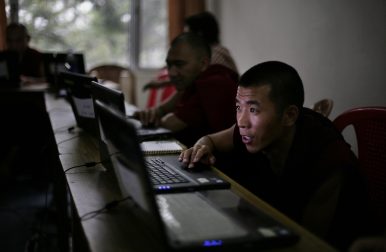The title above comes from Andy Greenberg’s February 19, 2019 article on the security and technology website, WIRED.com. John Wooden, the legendary men’s basketball coach at UCLA was fond of saying, “Speed it up; but, don’t hurry.” A motto that can also apply to the cyber world. Dmitri Alperovitch, Chief Technology Officer at the cyber security firm, CrowdStrike, “argues that the crucial moment [regarding a breach] isn’t necessarily the initial penetration; but, what happens next — how quickly intruders can move from that [initial] beachhead, to expand their control. And no one, Alperovitch has found, does it faster than the Russians,” Mr. Greenberg wrote.
“In its annual global threat report released this week/Tuesday, CrowdStrike introduced a new metric of hacker sophistication: What the firm calls “breakout” speed,” Mr. Greenberg wrote. “Analyzing more than 30,000 attempted breaches in 2018, the company says it detected across its customer base, CrowdSreike measured the time from hackers’ initial intrusion, to when they began to expand their access, jumping to other machines, or escalating their privileges within a victim network – to gain more visibility and control. The company compared those times among state-sponsored hackers from four different countries, as well as non-state [but sophisticated] cyber criminals. Their results,: Mr. Greenberg noted, “suggests that Russian hackers were far and away the fastest, expanding their access on average, just 18 minutes and 49 seconds – after gaining their initial foothold.”
 It has been more than a week since a young militant in the district of Pulwama in the India-administered state of Jammu and Kashmir drove a car packed with 750 pounds of explosives into a convoy of Indian paramilitary forces, killing at least 49 of them.
It has been more than a week since a young militant in the district of Pulwama in the India-administered state of Jammu and Kashmir drove a car packed with 750 pounds of explosives into a convoy of Indian paramilitary forces, killing at least 49 of them.












/arc-anglerfish-arc2-prod-mco.s3.amazonaws.com/public/HGCFGDWA3RABFJOJ7ZHKU4WCIM.JPG)
